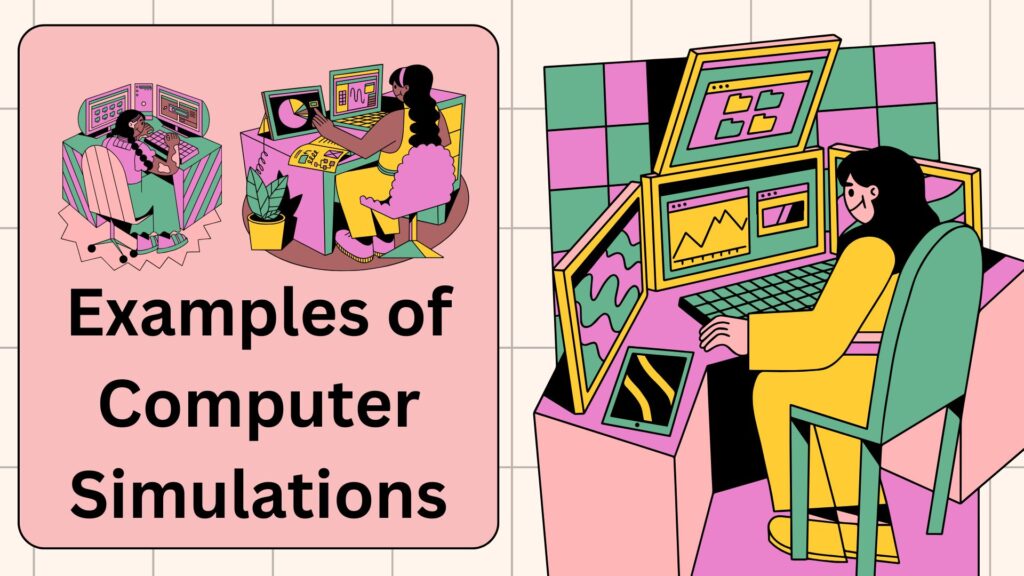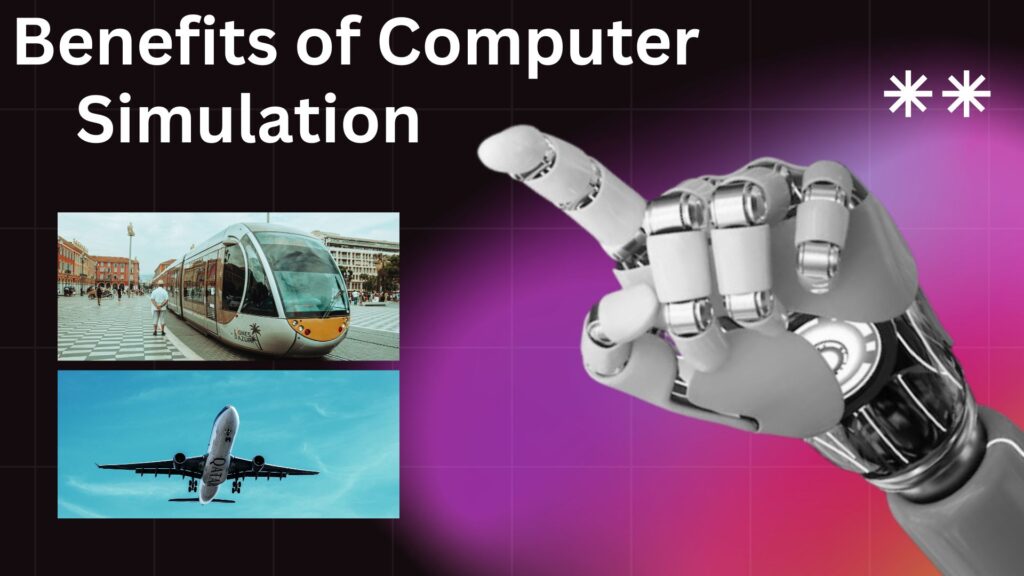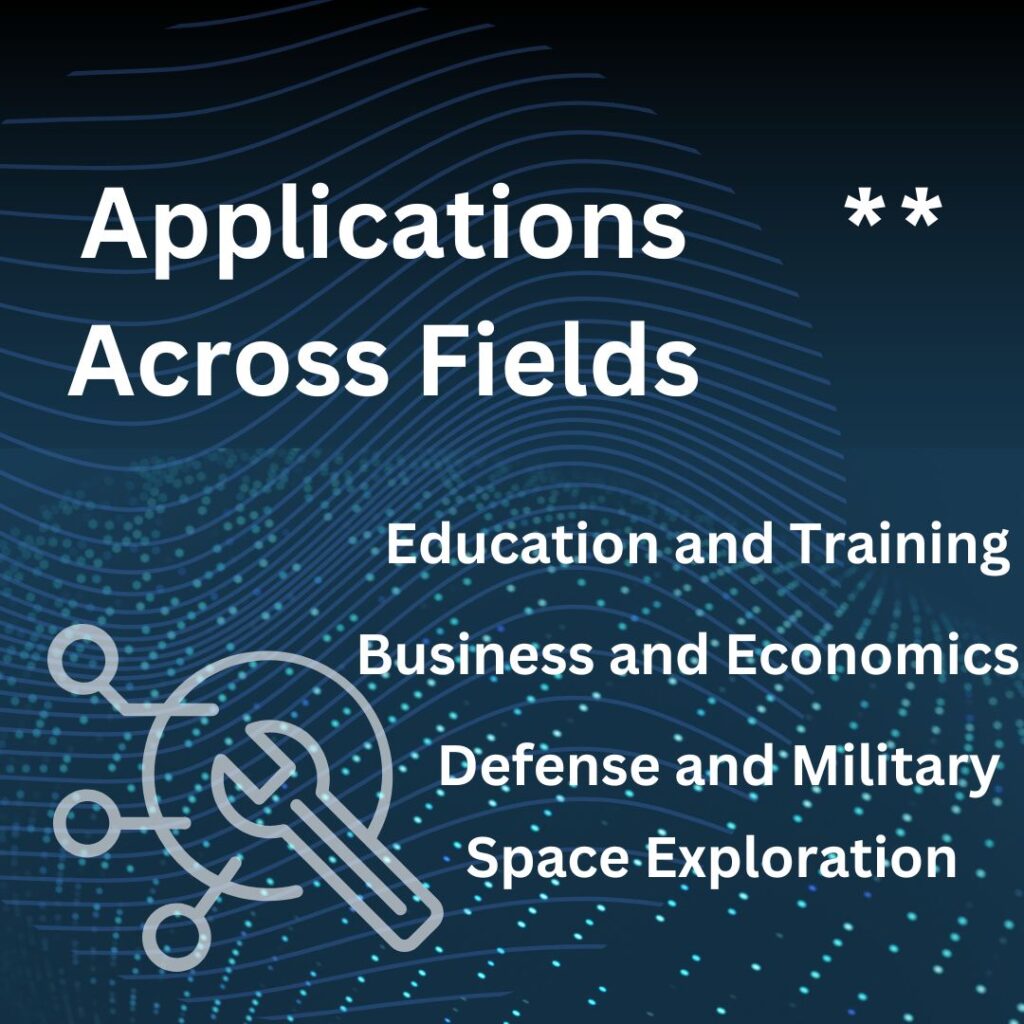computer simulation
A computer simulation is the creation of a digital model that replicates a real-world system, process, or phenomenon. Using computer software, simulations allow users to observe, analyze, and predict outcomes under various conditions without interacting with the actual system. This tool is widely used in science, engineering, healthcare, and business to solve complex problems, optimize designs, and evaluate scenarios.
Computer simulations are especially useful when physical testing is impractical, expensive, or hazardous. By adjusting input parameters, they provide insights into how different factors affect outcomes, making them invaluable for research and decision-making.
Examples of Computer Simulations

Weather Forecasting
- How it works: Advanced models analyze atmospheric data such as temperature, humidity, and wind patterns to predict weather conditions.
- Applications: Forecasting hurricanes, planning agricultural activities, and issuing disaster warnings.
Flight Simulators
- How it works: Pilots use virtual cockpits that replicate real-world flight conditions, including takeoff, turbulence, and emergencies.
- Applications: Training pilots in safe environments and testing aircraft systems without physical flights.
Disease Modeling in Healthcare
- How it works: Epidemiologists simulate the spread of diseases using factors like population density, infection rates, and vaccination impacts.
- Applications: Predicting disease outbreaks, evaluating public health interventions, and planning healthcare resources.
Traffic Flow Management
- How it works: Urban planners use software to simulate traffic patterns and test the effects of road designs or signal changes.
- Applications: Reducing congestion, optimizing public transportation, and planning for urban expansion.
Engineering and Manufacturing
- How it works: Simulations test product designs under various conditions, such as stress, temperature, or motion.
- Applications: Vehicle crash testing, construction safety analysis, and aerospace engineering.
Environmental Studies
- How it works: Simulations model the effects of climate change, deforestation, and pollution on ecosystems.
- Applications: Predicting future climate scenarios, designing sustainable practices, and mitigating environmental damage.
Benefits of Computer Simulation

Cost-Effectiveness
- Reduces expenses by replacing the need for physical prototypes, testing, or trials. For instance, simulating a car crash saves on building multiple test vehicles.
Safety
- Allows experimentation in hazardous scenarios without risking human lives or equipment. Nuclear plant failures and disaster management plans are commonly simulated to ensure safety protocols.
Time Efficiency
- Accelerates testing processes. For example, climate models can simulate decades of weather patterns in a matter of hours.
Flexibility
- Enables quick adjustments to variables, allowing the exploration of multiple scenarios. Urban planners can instantly test the impact of adding a new road to a city grid.
Insights into Complex Systems
- Models systems too intricate to replicate physically, such as black hole formations or biochemical reactions.
Enhanced Decision-Making
- Provides data-driven insights that improve strategic planning in business, healthcare, and environmental policy.
Applications Across Fields

Education and Training
- Simulations, like virtual labs or medical training tools, enhance learning by providing hands-on experiences.
Business and Economics
- Companies use market simulations to predict consumer behavior, test marketing strategies, and optimize supply chains.
Defense and Military
- Simulations train soldiers for combat scenarios, test weapons systems, and plan missions.
Space Exploration
- NASA and other space agencies simulate spacecraft trajectories, planetary landings, and asteroid impacts to prepare for missions.
Limitations of Computer Simulation
While simulations offer numerous benefits, they also have limitations:
- Accuracy: Results depend on the quality of the input data and assumptions in the model.
- Complexity: Building detailed simulations can be resource-intensive.
- Interpretation: Misunderstanding results can lead to incorrect conclusions.
Frequently Asked Questions (FAQ,S)
What is a computer simulation used for?
Computer simulations are used to model real-world systems and processes for research, design optimization, and decision-making. They are applied in fields like healthcare, engineering, business, and environmental science.
How do simulations help in weather forecasting?
Weather forecasting simulations analyze atmospheric data, such as temperature and wind patterns, to predict weather conditions. These predictions help in disaster preparedness and agricultural planning.
Are simulations accurate?
Simulations can be highly accurate if the input data and model assumptions are reliable. However, inaccuracies may arise from poor data quality or overly simplified models.
What are the advantages of using computer simulations in education?
Simulations provide interactive and hands-on learning experiences, helping students understand complex concepts. Examples include virtual labs, medical training tools, and physics experiments.
Can simulations replace real-world testing?
While simulations can reduce the need for physical testing, they often complement real-world experiments rather than replace them entirely. Real-world testing may still be required for validation.
What industries benefit the most from simulations?
Industries such as healthcare, aerospace, automotive, defense, and education benefit significantly from simulations due to cost savings, improved safety, and efficient problem-solving.
Conclusion
Computer simulations are powerful tools that enable us to analyze and predict complex systems in a controlled environment. They have revolutionized industries like healthcare, engineering, and education by offering cost-effective, safe, and efficient solutions to real-world problems. However, their effectiveness relies on accurate data, well-designed models, and proper interpretation of results. As technology advances, simulations will continue to play a critical role in innovation and decision-making.







